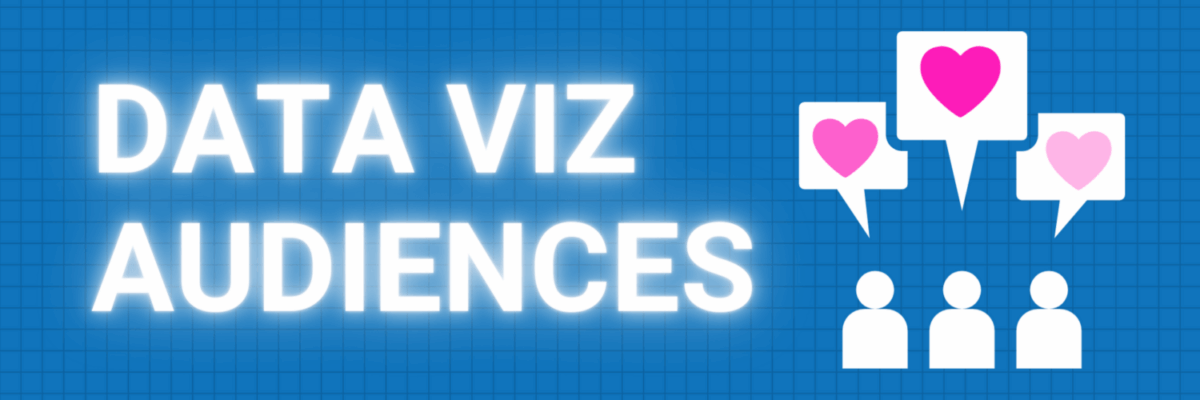Data Viz Audiences
When people aren’t 100% sure you are talking to them, they ignore you. (Heck, when I’m jogging and the dude in the car is clearly talking to me, I still ignore him.)
You want your audience to immediately see themselves in your data and how that data story is relevant to them. Which means you have to figure out who you are talking to.
You have to identify your people. Dataviz audiences are on a spectrum in terms of what they need from you in order to get hooked in and engaged.
At the one end of the spectrum we have the public. By “public,” I mean people who tend to be data scared. Well…. not everyone, obviously. I’m in the public and I don’t feel data scared. But we do have this segment out there that we are often trying to reach with our data. These are folks being actively told they can’t trust science, that climate change is a hoax, you know the type.
So if we want to reach them, we need to be easy and unintimidating, like an icon of an hourglass, 25% full.
At the other end of the spectrum we have the very serious crowd, those academics, epidemiologists, and statisticians, who want to see traditional graphs like a bar chart. That bar chart probably needs to have confidence intervals on it.
When we take the bar chart with confidence intervals to the public we scare them and make them feel stupid. And no doubt if you took a graph of an hourglass to the academics they would laugh you out of the room.
And you likely have audiences that fall along this spectrum. Which is your clue that one size does not fit all. One graph will not make all parties happy. Your chart choice and even the words you choose to convey your point will depend on your audience.
Let’s take a look at an example. This is the COVID dashboard from the State of Oregon.
Oregon is one of my clients so we have discussed the feedback on this dashboard and by the time you read this, they have likely already incorporated my advice. There’s a lesson in here for all of us about audience.
Any state’s COVID dashboard is intended to be for everybody, from the epidemiologists at CDC to your next door neighbor. Which makes designing these a difficult task. It’s hard to make everyone happy.
Whether they knew it or not, this dashboard ultimately ends up mainly used by the academic epis and journalists who have trained themselves on how to read data presented this way.
The reliance on tables and isolated numbers without much context are signs that, unintentionally, the general public is being pushed out of this audience because general public doesn’t as easily consume data presented this way.
General public comes to this dashboard asking burning questions like “How bad is it?” “Do I need to wear a mask?” and it isn’t easy to get those answers here. Only people with deep contextual knowledge can read these numbers and find the answers to those questions.
In the video below, I identify this is Mistake #2: You Talkin to Me?
And that’s the thing – The data are always talking to someone, we just usually don’t know who. Start by identifying your people.

Then, let’s construct the right communication tool to meet their needs.
How?
I’ll show you exactly how. Heck, I’ll coach you, step-by-step, through it in the Data Viz Academy.




